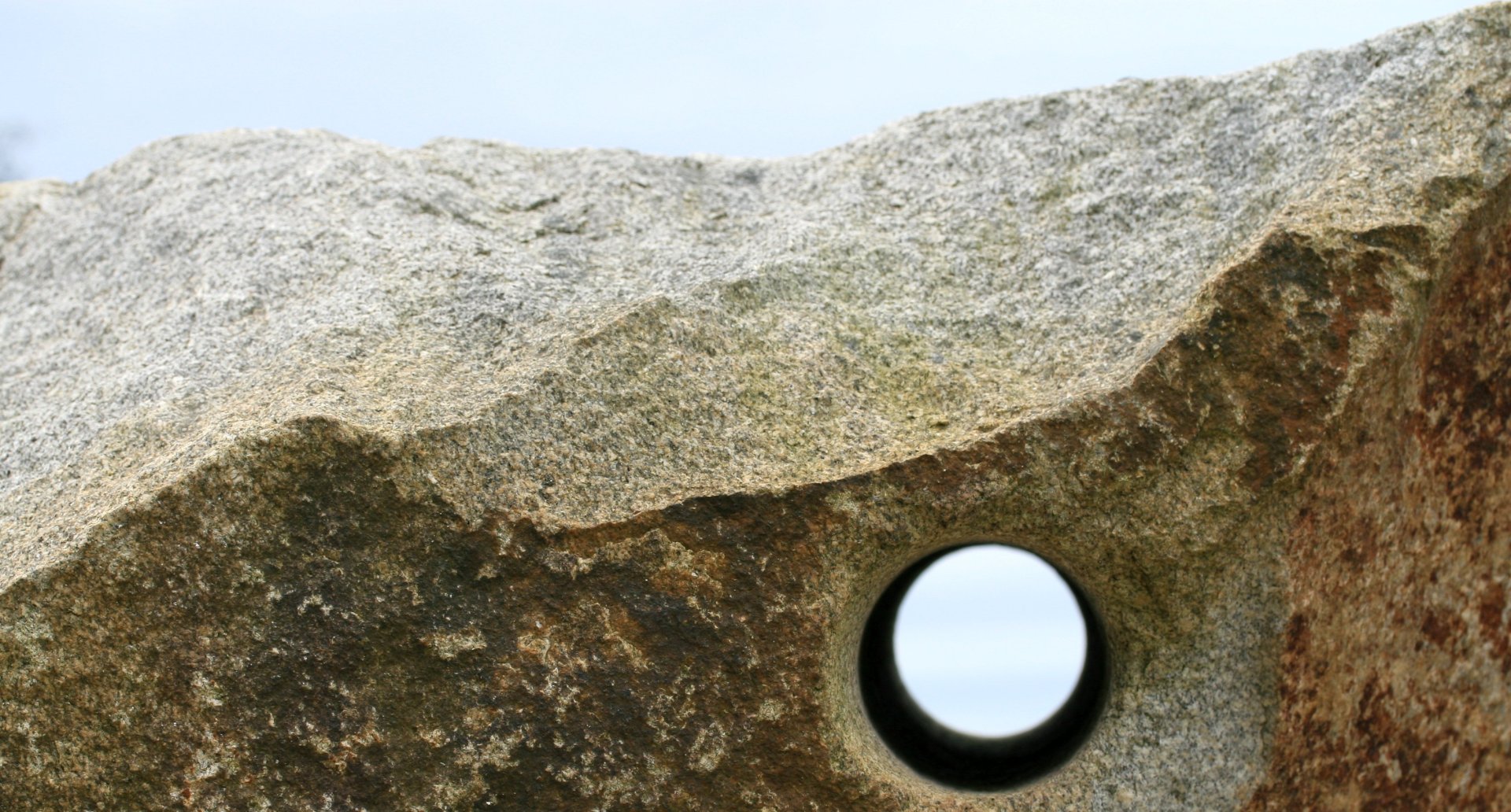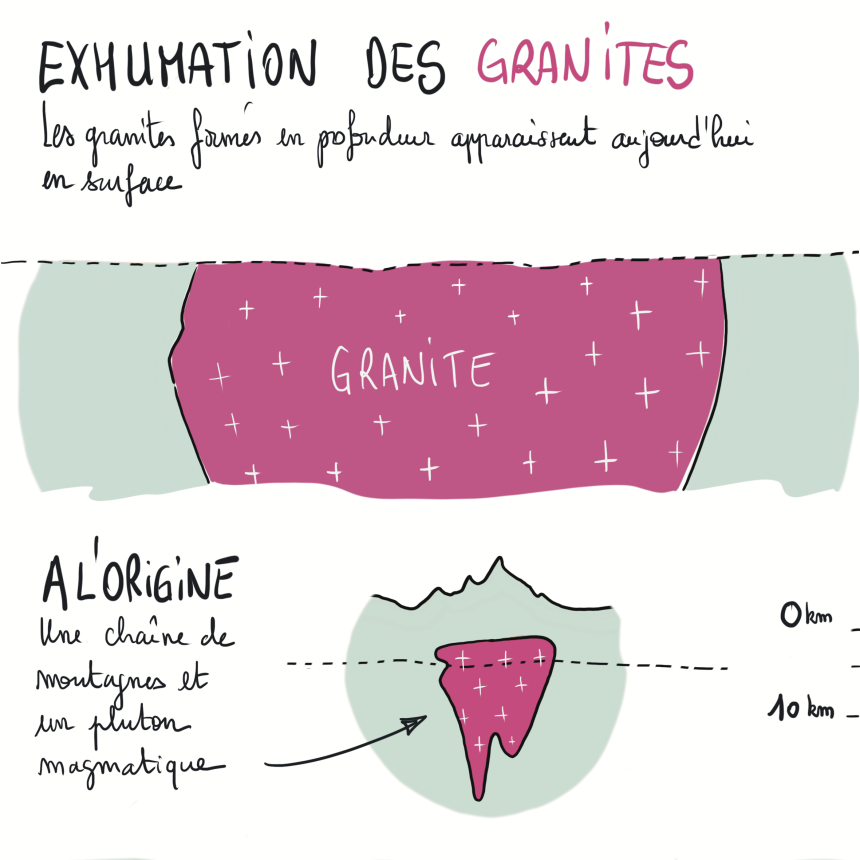Stone : granite
Type : plutonic magmatic rock
Age : 321 million years (Carboniferous)
Quarry : Kerastang, Saint-Renan (Finistère)
Natural and Artificial Fracturing
The cylindrical hole running through the block is a remnant of drilling. Quarry workers drill behind the rock face to insert explosive charges, which fragment the rock. This allows the blocks to be extracted using an excavator. The relatively light-colored surfaces of the block are fresh fractures caused by artificial blasting, while the oxidized ones are joints, natural cracks formed by mechanical processes.
Saint-Renan: Tin Capital of Europe
After the granite crystallized, secondary minerals such as cassiterite appeared. Much later, during the weathering of the granite and its exposure at the surface, this dense and durable tin oxide mineral was released, transported, and then trapped in alluvial deposits at the bottoms of valleys. These cassiterite concentrations were mined between 1960 and 1975, making Saint-Renan the tin capital of Europe.
What Is Granite?
Granites form within the Earth’s crust through the slow cooling of magma. Solid minerals appear gradually and fuse together. Granites are later exposed by erosion and/or tectonic uplift. The main minerals in granite are visible to the naked eye. You can generally identify:
Quartz (making up 20–60% of the rock), Micas (black or white) and Feldspars.
The Granite of Saint-Renan
The granite massif of Saint-Renan stretches 40 km from east to west and 9 km from north to south at its widest point. The granite outcrops along the coast near the Pointe de Corsen, where it forms beautiful beaches bordered by cliffs. The granite pluton is bounded to the south by the North Armorican Shear Zone. The highest point of the massif, the Keramézec viewpoint, rises to 143 meters in the town of Ploumoguer and marks the highest summit in the Léon region.


